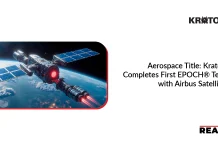Interlune, a pioneering natural resources company, has partnered with Astrolab, a leader in multi-planetary mobility and logistics, to deliver a groundbreaking payload to the Moon aboard Astrolab’s FLEX Lunar Innovation Platform (FLIP) rover.
As part of an upcoming lunar mission, Interlune’s advanced multispectral camera—developed in collaboration with NASA’s Ames Research Center in California’s Silicon Valley—will be deployed on the FLIP rover. The camera will capture high-resolution imagery of the Moon’s surface to estimate the quantity and concentration of helium-3 in the lunar regolith, a rare isotope with promising potential for future clean energy production.
Interlune’s mission marks a critical step in its long-term vision: becoming the first commercial enterprise to extract and utilize natural resources from space, beginning with helium-3 mining on the Moon.
Also Read: RTX’s Blue Canyon Technologies Unveils New Larger Spacecraft
“This is our first lunar mission and a seminal milestone toward being the first company to harvest natural resources from space,” said Interlune cofounder and CEO, Rob Meyerson. “Astrolab’s ability to provide reliable mobility on the Moon to partners like Interlune is the quintessential example of the collaboration and innovation building the lunar economy.”
The FLEX rover’s versatile capabilities are tailored for transporting and deploying scientific and commercial payloads across the Moon’s surface, making it an ideal platform for Interlune’s helium-3 exploration technology.
“This is exactly the kind of mission we built Astrolab for-delivering breakthrough science to the lunar surface,” said Jaret Matthews, founder and CEO, Astrolab. “We’re thrilled to be carrying Interlune’s multispectral camera to the Moon, and proud to help make this kind of exploration possible.”




